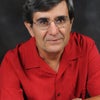The late fifth century B.C.E., Greek historian Ktesias spoke about a single-horned animal, monokeros, or unicorn. The Christians elaborated on this mythological animal, and made it like Christ: rare, magical and strong.
The unicorn continues to excite the human imagination. Artists paint it and writers expand its mythology. They use the metaphor of the unicorn to tell stories.
The latest incarnation of the unicorn is in the telling of the story of the end of the natural world in Laos. Modernization, globalization and impoverishment have lighted fires that are emptying the forests of Laos of wild animals.
The author of this dramatic report is William deBuys, a prolific and important American writer. His latest of eight books, The Last Unicorn (Little, Brown and Company, 2015), is an epitaph to the dying natural world in Laos. He tells his story by throwing light on a rare mammal known as the saola.
DeBuys had the good fortune of undertaking his long and difficult trek through the forests of Laos with a naturalist named William Robichaud, who spent years exploring the forests in the Vietnam-Laos border, the home of the elusive saola.
No westerner ever saw a saola in the wild. This is a large grazing animal related to antelopes, cattle, goats, bison and the Arabian oryx. Because of its resemblance to the Arabian oryx, scientists gave it the genus name Pseudoryx. Evidence for the existence of saola came in 1992 from the head of a dead saola nailed on the wall in the shack of a Vietnamese hunter.
So, why did deBuys embark on his elusive journey for a ghost of a large mammal? A camera in Vietnam caught saola's image in 2013. But the animal may well have been poached to extinction.
DeBuys admits his quarry is an "animal known mainly for being unknown." Yet, he and Robichaud entered the wilderness of the Annamite Mountains where the unknown saola probably lived for millennia. That way, he satisfied his wish to find himself in the territory of the saola.
He says: "The saola seems kindred to the fabled unicorn of medieval lore. Like the unicorn, it is as rare as the rarest thing on Earth... It stands close to being the apotheosis of the ineffable, the embodiment of magic in nature."
Yes, hunt an animal to extinction, and it immediately becomes magical and ineffable. One can understand this tragic and poetic language. It is full of anger, anguish and guilt. It is also a tribute to an animal probably extirpated by development projects and hunters.
DeBuys starts his journey on a small wooden boat sailing the waters of an artificial lake where forest used to grow. Laos drowned the forest to produce electricity for Thailand. The promise of this ecocide was some of the money from Thailand would be used to pay for the protection of the Nakai-Nam Theun reserve where the saola would find places to hide from hunters. But deBuys discovered "the protected area is largely unprotected."
From his experience in Laos, deBuys is right in extrapolating for other forests in other countries. He says that many of what appear to be wild places all over the world are "lamentably empty." This strikes a chord with me. I remember jogging in the redwood forest of northern California in 1988-1989 while teaching at Humboldt State University. What bothered me in that otherwise pleasant experience was the utter silence in the redwoods. I never saw an animal or heard a bird sing.
"The old trees may still tower, and the touch of machinery may be light, but no wild animals larger than a cocker spaniel remains. Nearly all the four-leggeds of any size, along with the monkeys and apes, have been hunted or trapped or starved out," deBuys wrote.
True, the silence of death hovers ominously nearly all over the natural world. Humans continue to exploit and eat all that moves in the forest or sell the prey for "medicinal" purposes. DeBuys describes this deadly effect as the "depredation of poachers." And in the case of the forests of the saola reserve, the poachers threaten to empty the land of its "wildlife wealth."
DeBuys never came across a saola, "as big as a carousel pony." But he did come across the reality that has been killing the saola.
Like an anthropologist, deBuys found a very poor but culturally rich Laos. Yet, the missionaries of globalization and deforestation spread the shame of backwardness like a disease, infecting the "ethnics," of Laos. These hunter-gatherers and nomadic tribal people are everywhere and nowhere. They spend most of their time searching for food in the forests.
DeBuys came in contact with the Atel, one of the traditional nomadic tribes of Laos. The state moved them away from their homeland. "All that the outside world knows of the Atel," says deBuys, "would fit in a small notebook -- some scraps of language, a pittance of lore, almost nothing of their cosmology... The resettled Atel... walk a perilous line in their striving for subsistence."
The Atel people are the human equivalent of the saola.
Read The Last Unicorn. The book is extremely important and reads like a novel. DeBuys brings things to life. He writes beautifully. The image of the saola remains alive in the reader's mind. Saola may be the last unicorn.
